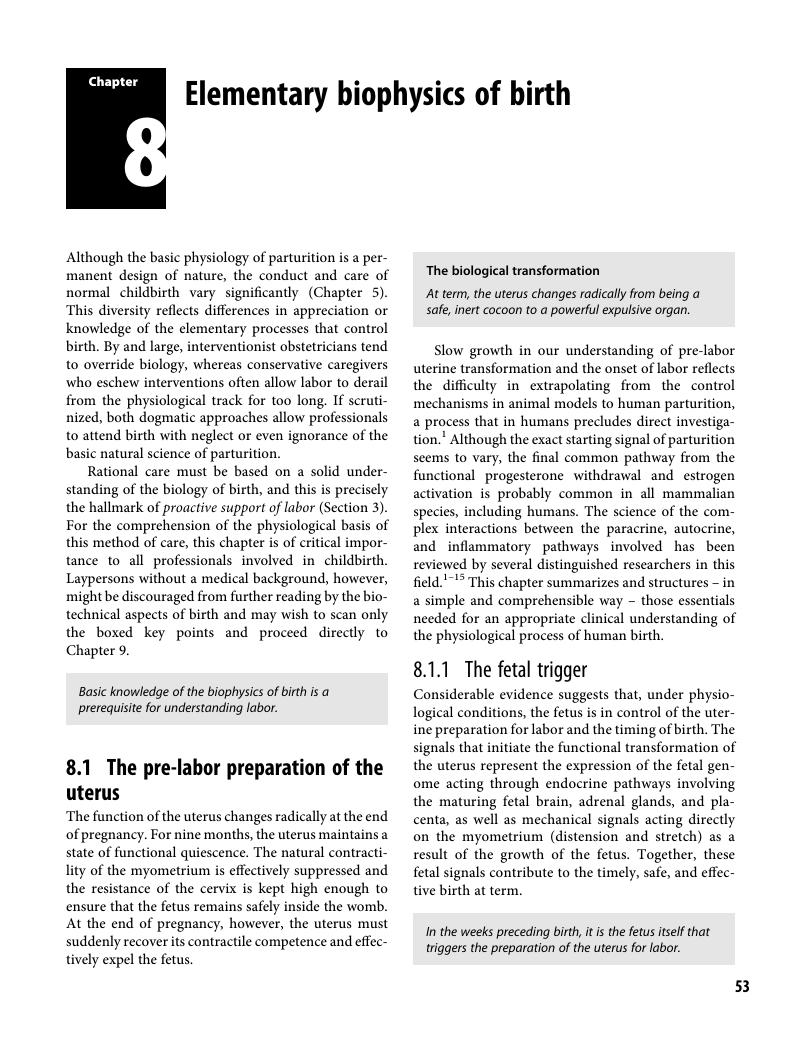Book contents
- Proactive Support of LaborThe Challenge of Normal ChildbirthSecond edition
- Proactive Support of Labor
- Copyright page
- Dedication
- Contents
- Foreword to the first edition
- Preface
- Web-links
- Chapter 1 General introduction
- Section 1 A wake-up call
- Section 2 Back to basics
- Chapter 7 Forgotten lessons from nature
- Chapter 8 Elementary biophysics of birth
- Chapter 9 Definitions and verbal precision
- Chapter 10 First-stage labor revisited
- Chapter 11 Second-stage labor redefined
- Section 3 Proactive support of labor
- Index
- References
Chapter 8 - Elementary biophysics of birth
from Section 2 - Back to basics
Published online by Cambridge University Press: 05 September 2015
- Proactive Support of LaborThe Challenge of Normal ChildbirthSecond edition
- Proactive Support of Labor
- Copyright page
- Dedication
- Contents
- Foreword to the first edition
- Preface
- Web-links
- Chapter 1 General introduction
- Section 1 A wake-up call
- Section 2 Back to basics
- Chapter 7 Forgotten lessons from nature
- Chapter 8 Elementary biophysics of birth
- Chapter 9 Definitions and verbal precision
- Chapter 10 First-stage labor revisited
- Chapter 11 Second-stage labor redefined
- Section 3 Proactive support of labor
- Index
- References
Summary

- Type
- Chapter
- Information
- Proactive Support of LaborThe Challenge of Normal Childbirth, pp. 53 - 61Publisher: Cambridge University PressPrint publication year: 2015



